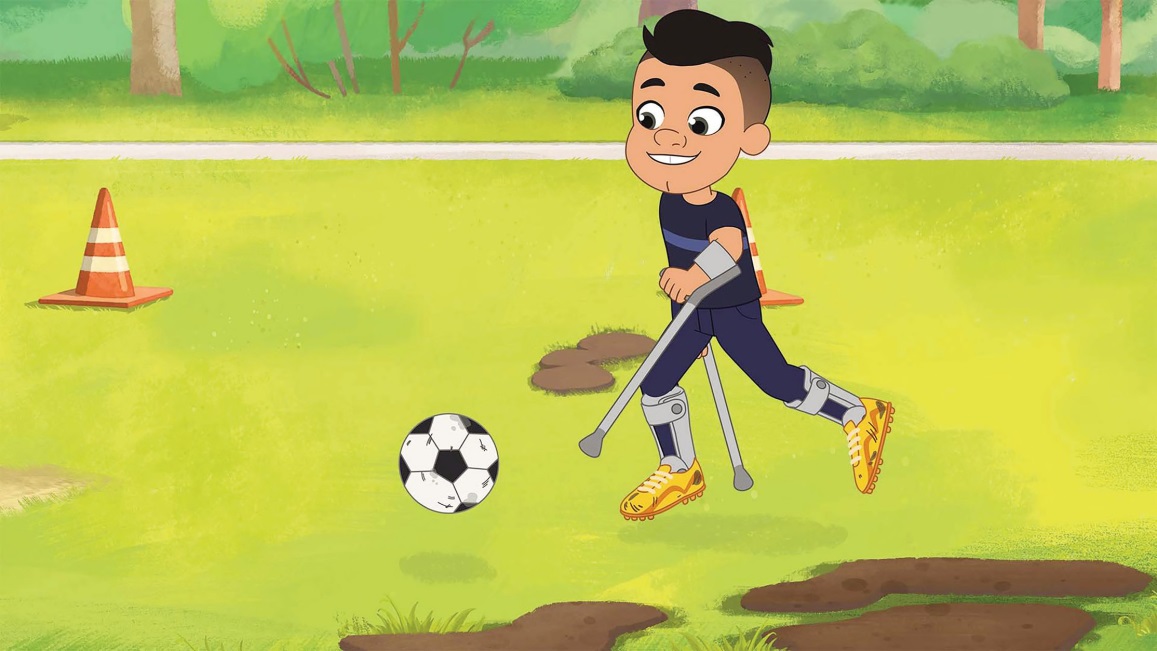
PHYSICAL CHALLENGE AWARENESS:
ALMA'S WAY FEATURES EDDIE MAMBO, WHO HAS CEREBRAL PALSY
BY DR. MARY LOUISE RUSSELL
In my role as a medical consultant for Alma's Way, the animated series from Fred Rogers Productions on PBS KIDS, I was called upon to assess numerous activities for the character Eddie Mambo, Alma's cousin.
Eddie is a boy with spastic diplegic cerebral palsy, with particular challenges with spasticity and weakness of his legs. I need to ascertain if proposed activities for Eddie could be performed safely as portrayed, or if modifications to these activities would be needed. I consider assessment of Eddie from three perspectives: mine as a pediatric rehabilitation physician, that of a child with cerebral palsy, and that of a child without a motor function challenge.
Cerebral palsy is a diagnostic category for which affected patients may have various functional challenges. Eddie, with his particular type and severity of cerebral palsy, has his greatest challenges with movement of his legs. Other patients with cerebral palsy, who may have either a different form of cerebral palsy
and/or a more severe form of cerebral palsy than Eddie, may have challenges with control of mouth muscles, back muscles, and arm muscles. Eddie represents a child with one form of cerebral palsy, spastic diplegic cerebral palsy.
As a pediatric rehabilitation physician, I am aware that people with cerebral palsy have a wide range of movement capabilities, as well as challenges. To portray one child with cerebral palsy, we needed to delineate specific features of this child's movement function. One very well validated assessment of motor function for children with cerebral palsy is the Gross Motor Function Classification (GFMFC), which first was presented in 1997. We decided that Eddie would function at a GMFC level of 2. Children at this level are noted to be able to walk without assistive devices